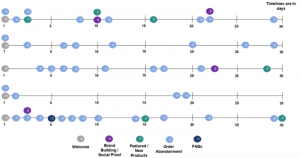Following the surge in popularity of finance software during the first part of the twenty-first century, a great number of organizations both big and small recognized the advantages that automating laborious financial processes can bring to the efficiency of their company.
But this widespread adoption of software doesn’t mean that the job is done. Far too many businesses have taken the leap and invested in a finance system for the business, but still, aren’t using it to the maximum of its capability. Thus, they are missing out on crucial features and functionalities that have the scope to make their lives much easier.
What got you here won’t get you there—here’s why?
The best finance software offers its users a whole range of features to improve the effectiveness and efficiency of the finance function. Here are just a few of them:
- Accounts payable and receivable, including invoice and payment processing and billing activities
- Budgeting and forecasting, including forward financial planning and P&L activity
- Expense management, including employee expense reimbursement, cost allocation, and reporting
- Auditing and cash flow, including regulatory reporting, policy compliance, and cash flow management
It is easy for a company to purchase a finance system and be initially so engaged in working with the basic features described above. Often, they neglect to dig deeper and identify some of the more advanced functionalities that have the potential to drive improved performance.
Engage with your finance software provider to make sure you are not under-using any features that could improve your ways of working further. Evaluating the range of reports within most systems can be a great way of finding and creatively driving areas of improvement across your existing processes.
Challenges for implementing finance software?
There are so many benefits to working with effective finance software, but it is important to realize that there are some challenges involved in the initial set up for which you need to prepare your finance team and the wider business. This preparation will allow you to get the best out of your new system.
First, it is crucial to take time to scrutinize your existing finance processes in advance. This can be time-consuming work. However, it will make it so much easier to map them across to the new finance software, and you will inevitably pick up duplications, blockages, and barriers that will make your final workflows smoother and more effective.
Another challenge can be engaging other stakeholders with the benefits of the new system. There may be some resistance to change because of existing, comfortable processes. You should be mindful to involve your finance team in the changes, ensuring that they can contribute toward the design and implementation of the system. Naturally, as part of this, you should have a robust training plan for all users of the system so that they can feel confident using it and you can minimize teething problems in the early stages of use.
How automation makes life easier for the finance function
Let’s not overlook the key advantages of implementing automation throughout your finance processes. After all, nobody wants a return to the traditional methods of working with outdated, clumsy manual spreadsheets, inflexible databases or complex, manual reporting. Here are some of the main benefits that you can expect from finance software:
Reduction in data errors and inaccuracies
Human error is inevitably a big cause of inconsistencies and errors with financial data. Finance systems can offer automated forms, tailor-made workflows, and clear data permissions, to reduce the likelihood of such issues causing significant problems to your business operations.
Cost reductions
It makes sense that one of the main purposes of working with finance software is that it improves efficiency to such a degree that it can cut your costs and positively influence your bottom line. Automated workflows and tasks need far less manual employee intervention, reducing your spend on staff and also freeing up your finance team up to enable them to work on more value-adding activities to more actively contribute toward business success.
Improvements in the speed of your data processing
A finance system can help your team to effectively identify and subsequently streamline or even remove irrelevant tasks, automate repetitive or manual jobs, and carry out some tasks simultaneously.
Take your finance software use to the next level
To make sure you are getting the best from your finance software, it is a good practice to continuously analyze your processes and workflows to see whether the system can offer you workarounds that are even more efficient. The reporting functionality built into most systems can be a valuable tool, helping you to identify performance strengths and weaknesses across all areas of the finance function and take positive action to improve productivity.
Business & Finance Articles on Business 2 Community
(38)
Report Post







